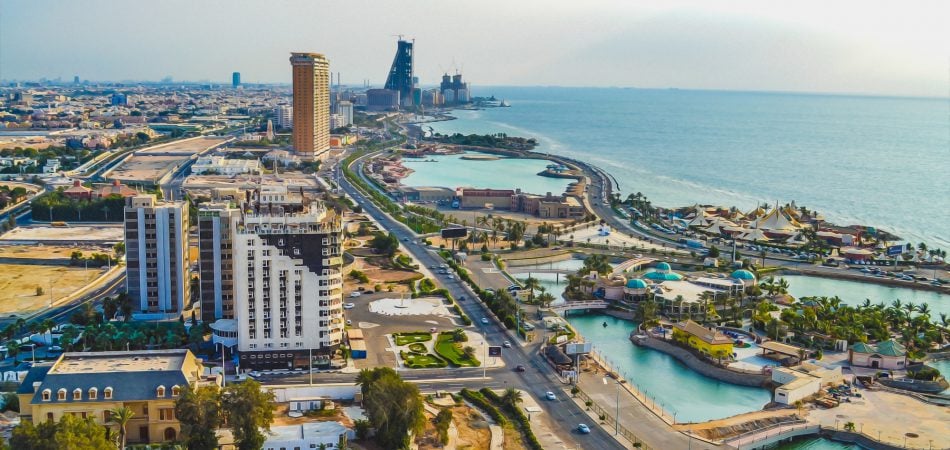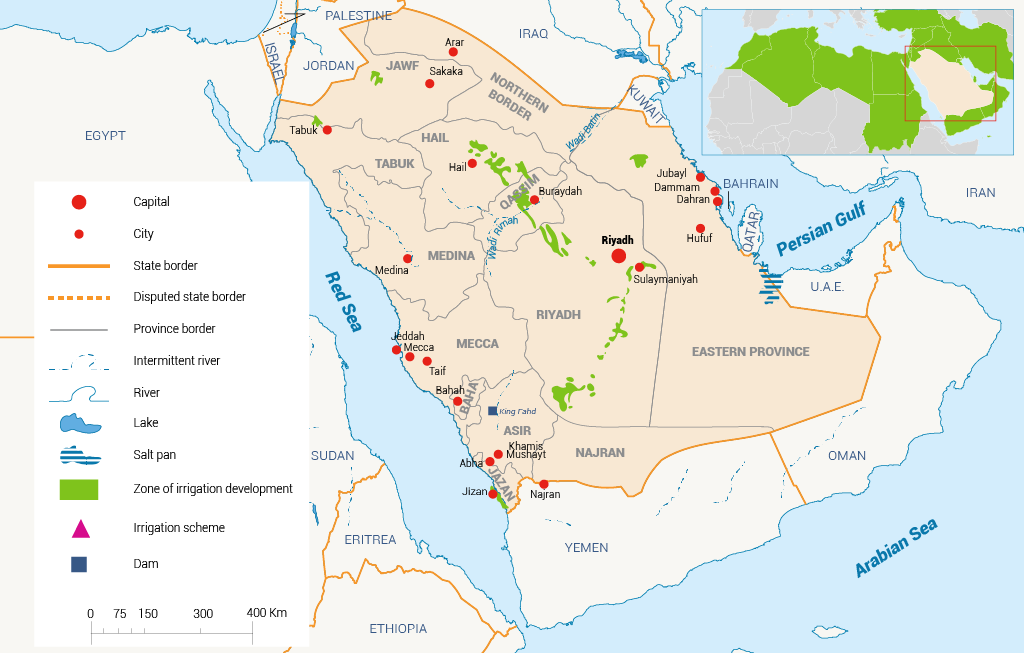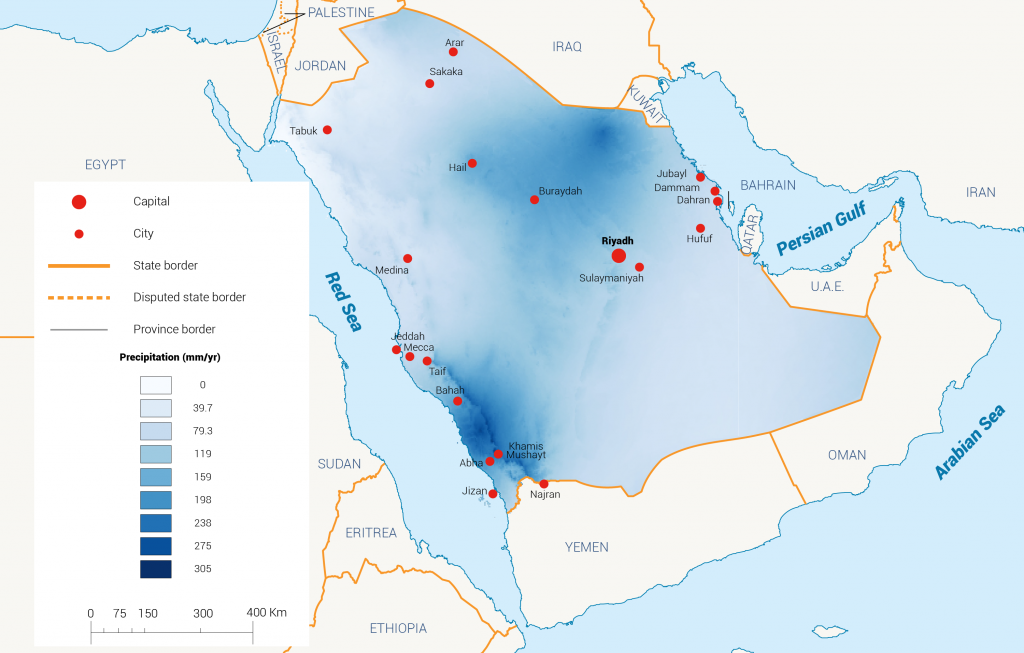
Introduction
Water in Saudi Arabia (KSA) is scarce and valuable because of the lack of natural water bodies. Climate change and population growth have exacerbated the problem of water scarcity. Groundwater is the main natural water resource, which has been exhausted beyond its replenishment rate. Moreover, KSA depends heavily on seawater desalination to fulfil the increasing demands – it produces about 18% of total desalinated water globally. At the same time, KSA has the third-highest per capita freshwater consumption in the world. If no action is taken in the near future, the country’s water resources will be endangered.
Geography and Climate
The total land area of KSA is 2.15 million km2.[1] As shown in Map 1, the country is bordered in the north by Jordan, Iraq and Kuwait, in the east by the Persian Gulf with a coastline of 480 km, in the south-east and south by Qatar, the United Arab Emirates (UAE), Oman and Yemen, and in the west by the Red Sea with a coastline of 1,750 km.[2]
KSA lies in the tropical and subtropical desert region, and the weather is hot and dry with a high evaporation rate. During the summer, temperatures can reach 55°C.[3] The annual rainfall fluctuates between 50-150 millimetres (mm).[4] As shown in Figure 1, the rainfall decreased from 86 mm in 2010 to 74 mm in 2015 but increased to 127.8 mm in 2018.[5] The recorded average rainfall in 2019 was about 59 mm.[6] Map 2 presents the rainfall distribution in KSA.
Figure 1: Annual rainfall in KSA between 2010 and 2019[7]
Population
The population of KSA was estimated at 35.04 million as of December 2020, with a growth rate of 1.59%.[8] Figure 2 shows the population and population projection to 2050, while Figure 3 shows the growth rate over the years. The population is expected to reach about 45 million in 2050, which will put extra pressure on the available water resources.
Figure 2: Population and population projection in millions in KSA (1950-2050).[9]
Figure 3: Population growth rate in KSA (1960-2020).[10]
Economy
As of 2019, KSA’s nominal gross domestic product (GDP) was $792.97 billion.[11] Figure 4 illustrates GDP growth between 1970 and 2019. GDP recorded an annual growth of 0.3% in 2019.
The main economic activities include crude petroleum and natural gas, which accounted for 27.4% of GDP, followed by government services (19.4%) and wholesale and retail trade, restaurants hotels (10%). Agriculture, forestry and fishing, and electricity, gas and water activities accounted for 2.2% and 1.6%, respectively.[12]
Figure 4: KSA’s GDP in billions (1970-2019).[13]
[1] Worldometer. Saudi Arabia land area.
[2] FAO, 2008. AQUASTAT Report: Country profile – Saudi Arabia.
[3] Abderrahman, WA, 2006. Groundwater resources management in Saudi Arabia. Special presentation and water conservation workshop, Khobar, Saudi Arabia.
[4] Alrwis, KN et al., 2020. Measuring the impact of water scarcity on agricultural economic development in Saudi Arabia. Saudi Journal of Biological Sciences 28(1): 191-195.
[5] General Authority for Statistics, 2018. Annual rainfall rate compared to long-term average for the period 1961-1990 in Saudi Arabia in 2010-2018.
[6] Ibid.
[7] Ibid.
[8] Worldometer. Saudi Arabia population.
[9] Ibid.
[10] Worldometer. Saudi Arabia population.
[11] World Bank. GDP Saudi Arabia.
[12] General Authority for Statistics, KSA, 2019. Gross domestic product 2019.
[13] Worldometer. Saudi Arabia population.


